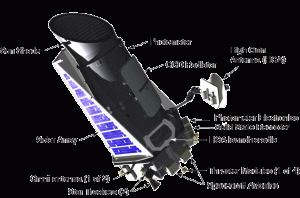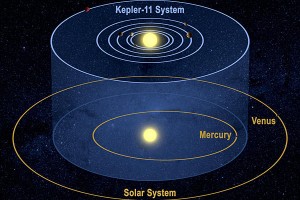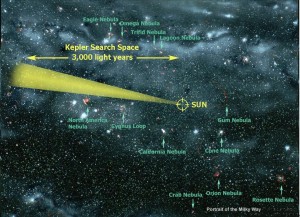
Professor Gideon Bass
Photo Credit: Larry Kravitz
TAEM- This past month The Arts and Entertainment Magazine was fortunate to meet Professor Gideon Bass who was the guest speaker at the monthly meeting for the Northern Virginia Astronomy Club. The meeting was held at George Mason University in Fairfax, Virginia.
Professor, please tell our student readers about your educational background.
GB- Well, my undergraduate degree was in astronomy and computer science at Hampshire College, a small experimental liberal arts school in Western Massachusetts. After graduation, I went to San Diego State University where I got a Masters degree in astronomy. And now I am currently in my second year at George Mason University, getting a PhD in their physics program, with a concentration in astronomy.
TAEM- Please tell us about the courses that you teach at George Mason University and what made you interested in the subject of Astronomy.
GB- I actually teach at Northern Virginia Community College, at the Annandale Campus as an adjunct professor. I am teaching their entry level astronomy class, and to me teaching is one of the greatest parts of being an academic, you can make direct changes in other people’s lives. Teaching astronomy is a great opportunity to expose students to ideas about critical thinking, the scientific method, and introducing them to what we know about the nature of the universe itself. It’s great fun.
 TAEM- We also understand that you are part of the school’s SPACS program. Please tell us about this and the part that you have in it.
TAEM- We also understand that you are part of the school’s SPACS program. Please tell us about this and the part that you have in it.
GB- Yeah, the SPACS program stands for School of Physics, Astronomy, and Computational Sciences. A lot of schools merge their Physics and Astronomy programs, but George Mason’s addition of Computational Sciences is fairly unique in my experience, and facilitates some really interesting research and collaborations. My own advisor, Kirk Borne, is a member of the Computational Sciences program, but has a background in astronomy. We are currently working together on some pretty exciting data mining projects using astronomical data to try and blend the best parts of multiple disciplines and produce new findings.
 TAEM- Professor Bass, your lecture was on the subject ‘Kepler Studies of Low-Mass Eclipsing Binaries’. Please tell us about this subject and the importance it has in studying the universe.
TAEM- Professor Bass, your lecture was on the subject ‘Kepler Studies of Low-Mass Eclipsing Binaries’. Please tell us about this subject and the importance it has in studying the universe.
GB- Well, fundamentally, binary stars are how we know what we do about most stars. Stars in exactly the right configuration so that both spectral lines are observable and we can see regular eclipses are the most direct way we can observe the individual star’s masses and radii. All of our modern understanding of stars comes from the studying this very small subset of stars.
The low mass binaries are an interesting problem in the field. Various theoretical astrophysicists have worked from conceptual grounds to produce models that can predict relationships between a star’s mass, radius, temperature, etc. To test these models, obviously we want to check their predictions with actual observed stars, and for the most part they work. However, the low mass regime does not, the observed stars are found to have much larger radii than is expected.
 Our research was about exploring one hypothesis about this divergence, namely that is was caused by a sample biased towards very close binaries. Using the Kepler telescope, we were able to find a more separated binary, and discovered that it did match the theoretical model, a strong piece of evidence in favor of this idea.
Our research was about exploring one hypothesis about this divergence, namely that is was caused by a sample biased towards very close binaries. Using the Kepler telescope, we were able to find a more separated binary, and discovered that it did match the theoretical model, a strong piece of evidence in favor of this idea.
TAEM- Please tell us about Kepler and the use of Spectroscopy in studying these stars.
GB- NASA’s Kepler telescope was instrumental for our project (if you’ll pardon the pun). As I mentioned earlier, we believed the problem was from a bias towards very close binaries. Finding binaries, especially of low mass, dim stars, is an inherently difficult process, requiring a powerful telescope and long observing times to detect eclipses, often months or even years. Kepler, a space telescope which was designed to look for small dips in light from planetary eclipses and observes 150,000 stars continuously, was ideal from that point of view.
Once we had used Kepler to find a likely target, ground-based spectroscopy at the High Resolution Spectrograph (HRS) and the Hobby-Eberly Telescope (HET), provided further data. Kepler provides light curves; the total amount of light at any given time. However, to get both the mass and radius of the stars in a binary, we need spectroscopic lines to give information about how fast the stars are moving.
TAEM- It is said that most star formations are of the binary nature and that our own sun does not fit in that category. Is this true, and if so why does our solar system lack that binary star?
GB- My understanding is that about half of all star systems are multiple stars systems, mostly binaries, but with the occasional triple, quadruple, etc. Since roughly half of all systems are multiples, obviously roughly 2/3s or all stars are in multiple systems. However, the fact that our sun is not in a binary is not incredibly unlikely, we have at least a one-in-three chance at that.
TAEM- How do binary stars co-exist, and what caused their creation?
GB- The thought is that they formed together. The odds of two stars forming independently in our galaxy and then coming close at exactly the right speed and direction to become gravitationally locked is essentially zero. What happens is that stars form in giant clouds of gas that produce many stars all at once. This is why we can observe open clusters, with many hundreds of stars. Eventually the cluster breaks apart, but if two stars happen to form close together, they will stay as a binary system indefinitely.
 TAEM- Do most binary stars come into conflict with each other, and does that lead to the destruction of one of them in time?
TAEM- Do most binary stars come into conflict with each other, and does that lead to the destruction of one of them in time?
GB- In general they won’t. By nature, two stars in a stable orbit will stay in a stable orbit indefinitely. The exception are stars that are already orbiting very close together, and the end of life stages of a star. As a runs out of hydrogen to burn and becomes a red giant, it puffs up, becoming far larger in radius. This changes the stability of the system, and may result in matter flowing from one of the stars to the other. Exactly what happens in these cases is very complicated with many possible outcomes depending on the exact configuration and initial masses, radii, etc. of both stars. To answer your question, in some very specific cases, it can result in the premature destruction of one of the stars, but this is fairly rare.
TAEM- How do planets in binary star systems exist, and how are they formed if they do?
GB- Well, we’ve only known for sure that this was possible for a fairly short time, and the exact details of how they form is still an area of ongoing research. In fact, even how planets are formed in single star systems is a bit unclear, although the general process involves a disk of material around the star steadily coalescing into larger bodies. With a binary system you have the added complication of a second star that could disrupt the forming planet.
Generally, planets will only form in two situations. The first is if the two stars are very far apart, the planet will form close to one of the stars, and will basically orbit just that star while the other star is far enough away that it has no significant effect. In the other case, the stars are very close together, and the planets forms far away from both of them, and can treat them as if they were a single combined star. These are the only configurations of orbits that would be stable.
 TAEM- What other tools are used in the studies of this subject, and where does your continuing research take science on this road of discovery?
TAEM- What other tools are used in the studies of this subject, and where does your continuing research take science on this road of discovery?
GB- Well one important tool for our research is computers. Determining the exact parameters from the observations available to us is not something that can be done analytically. Instead, we use a computer program, called ELC, which numerically calculates best-fit estimates for the mass, radius, etc. of each of the stars, while still accounting for all sorts of minor, but significant effects, like limb darkening and tidal distortion of the stars.
TAEM- We had asked the following question of many of the professors that we had interviewed : ” What advise could you offer to NASA in guiding them in their quest for future space exploration?”. What would your response be to this, and what would you like to see happen?
GB- My only advice is to try and minimize the politics of it. NASA can often be highly wasteful because one administration starts a project, and then the next decides to cancel it, wasting all of the money and resources already spent. While much of this is out of NASA’s hands, people can advocate their politicians to avoid canceling key projects, such as the James Webb Space Telescope that is scheduled for launch in a few years if it isn’t canceled.
TAEM- What sites can you give us, so that our readers can follow your progress?
GB- Well, reading the original papers for many of the major research journals can be complicated for an amateur since there is typically a fairly significant subscription cost. However, the site http://arxiv.org/archive/astro-ph has pre-prints of almost every paper published, and is a great way to see what’s actually being published in science today. My own paper is available there at http://arxiv.org/pdf/1211.1068v1.pdf as well as at the Astrophysical Journal.
TAEM- Gideon, it was a pleasure to meet you, and an honor to have us introduce you to so many of our student readers that follow our publication. We want to thank you, and hope that you will keep us informed of any of the projects that you may be involved with.
TAEM
Please share the story on Facebook, or donate to support our efforts!
